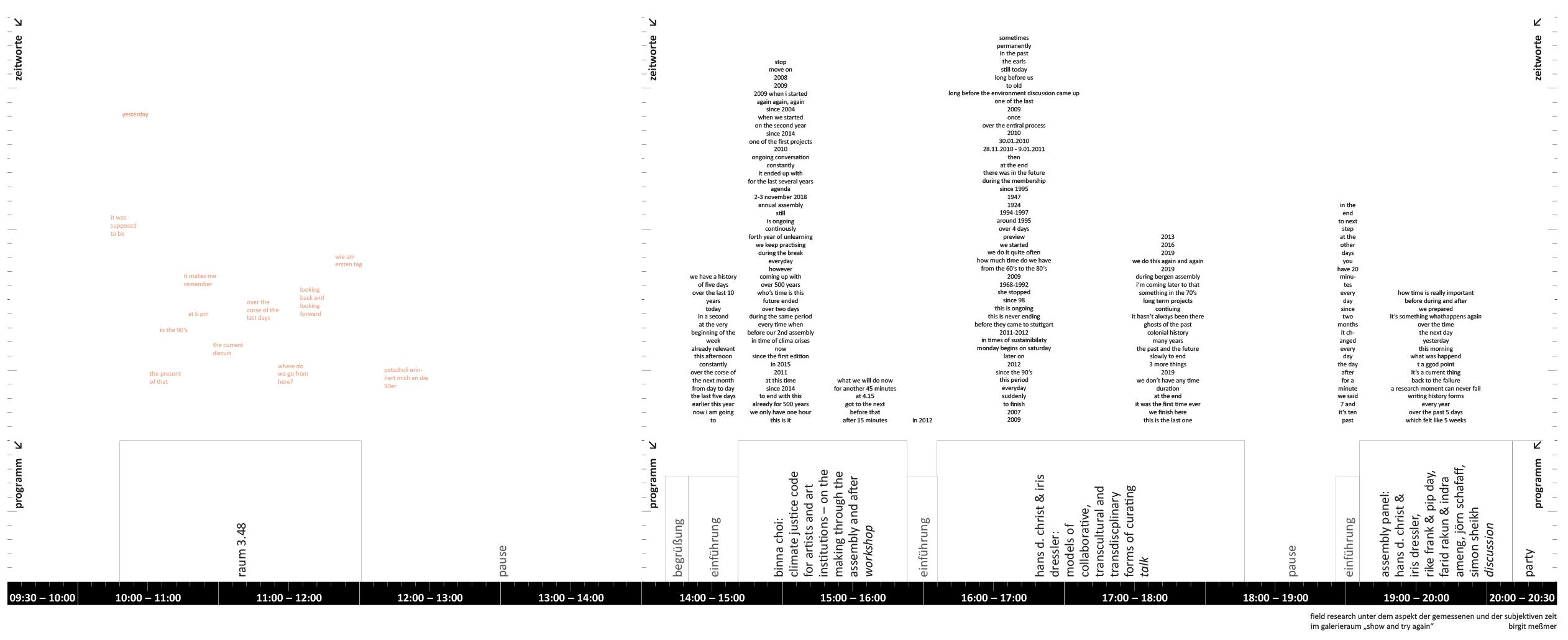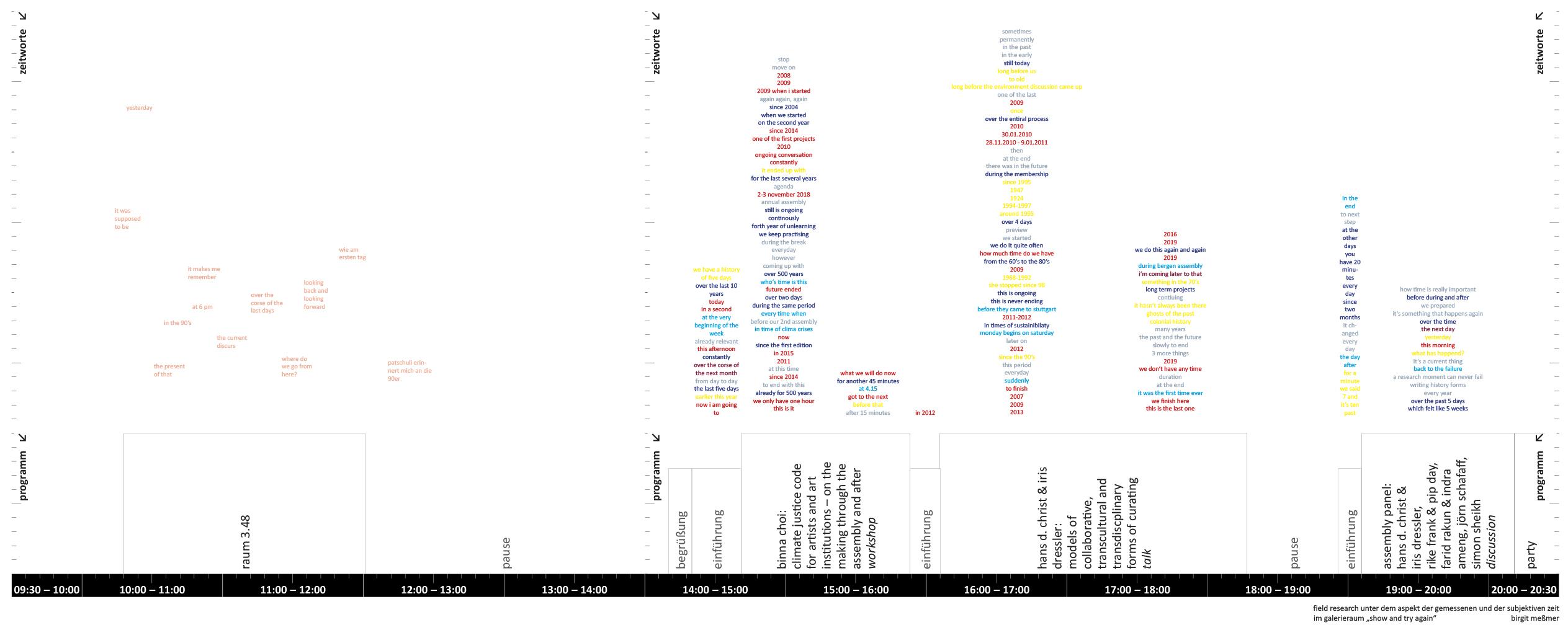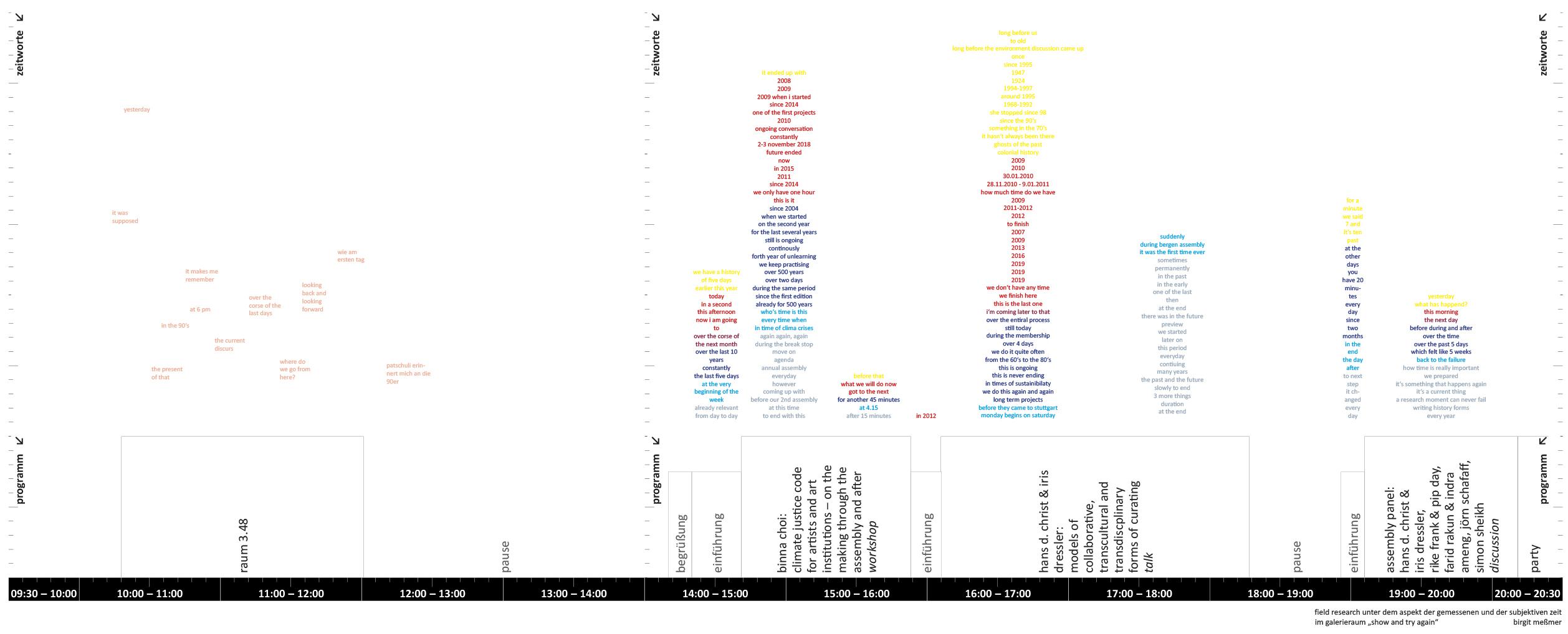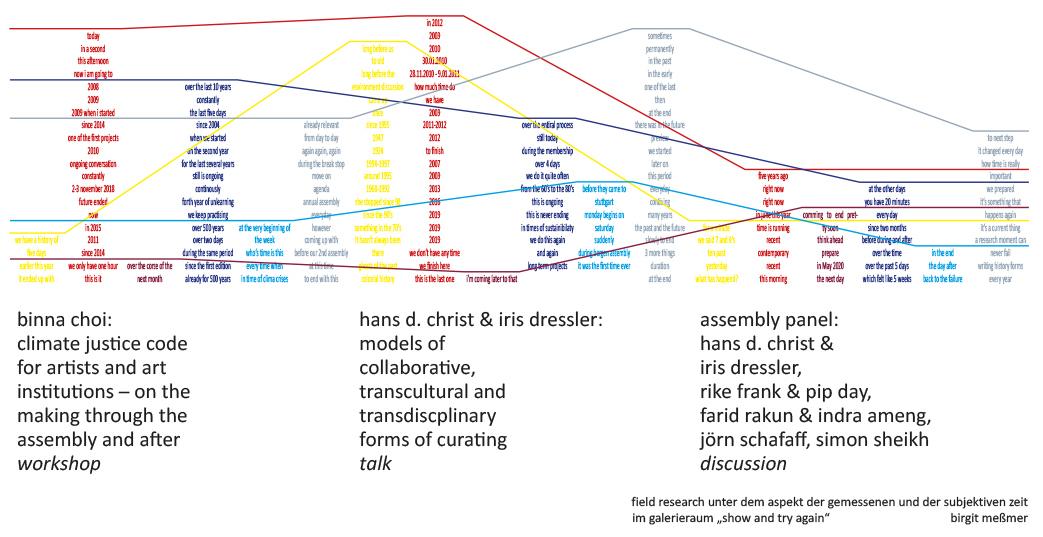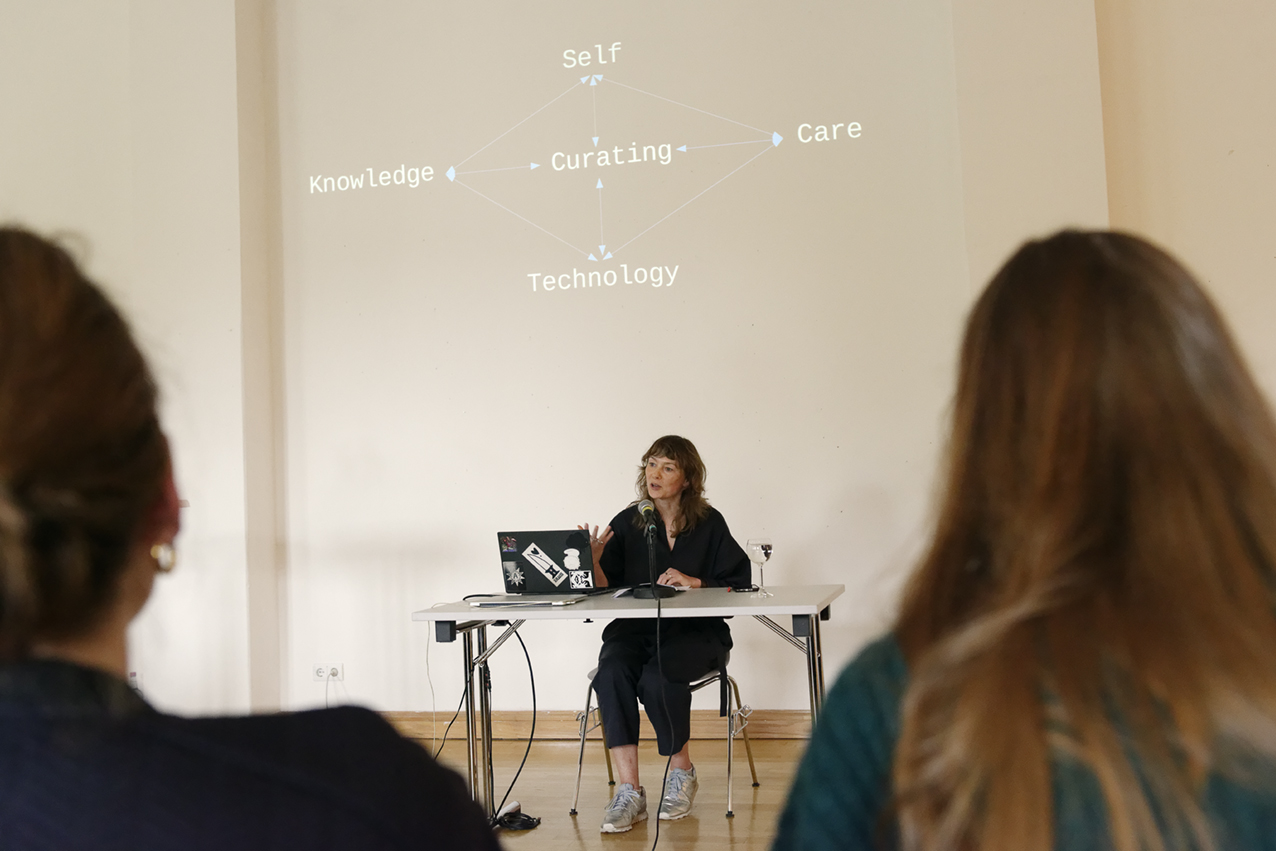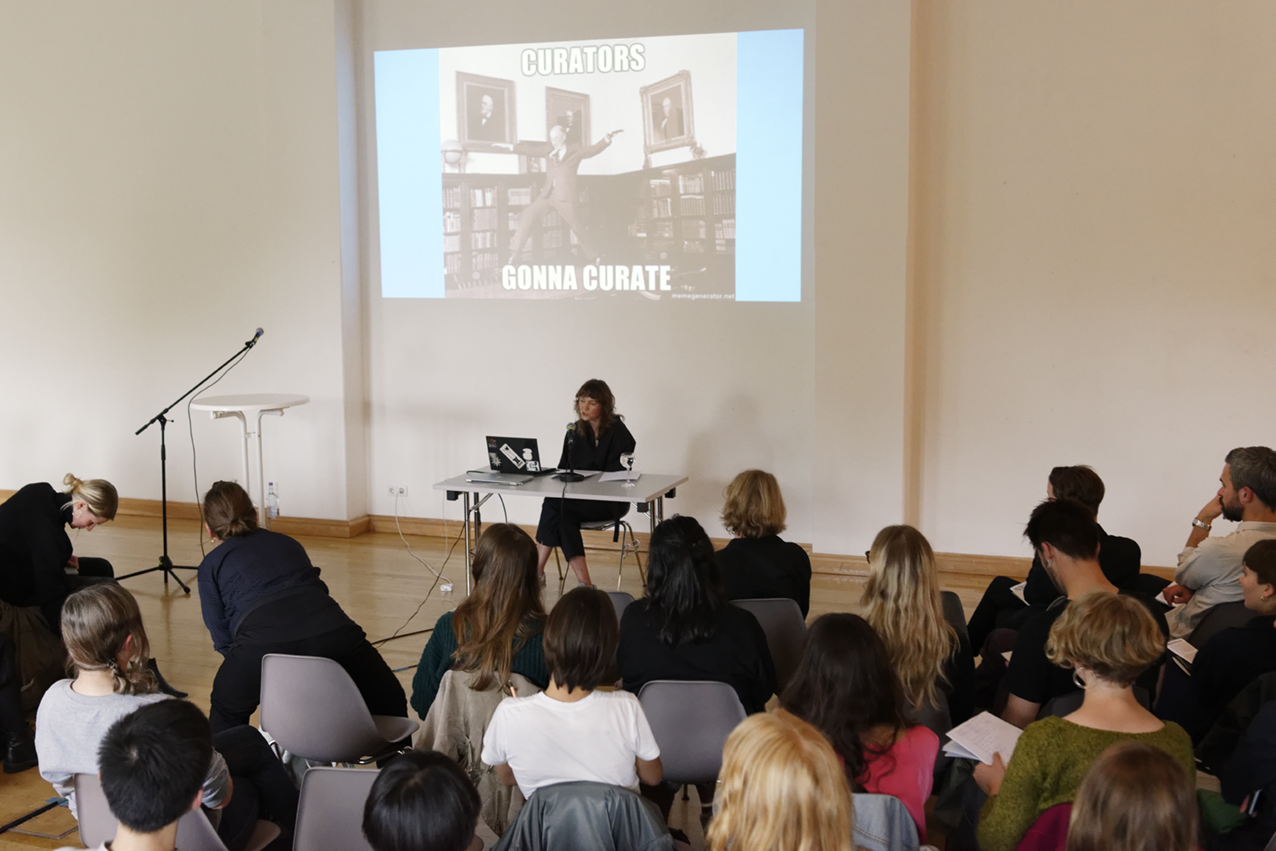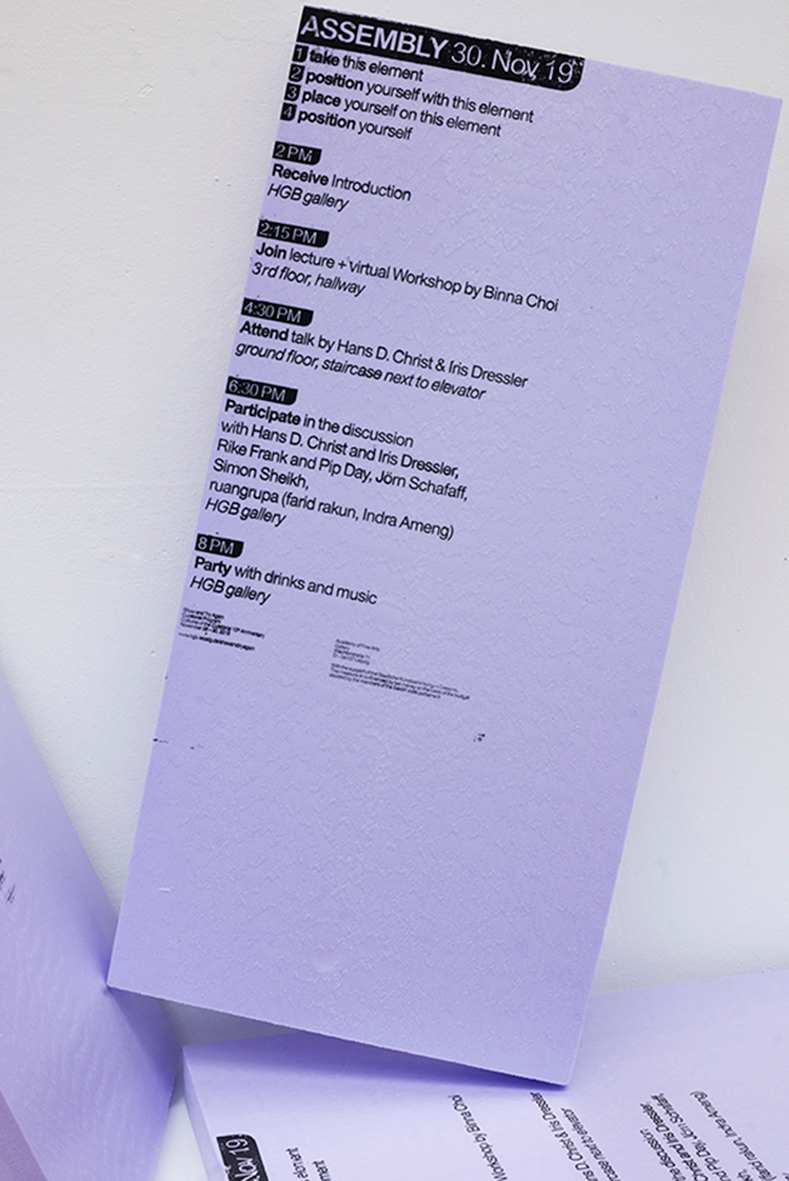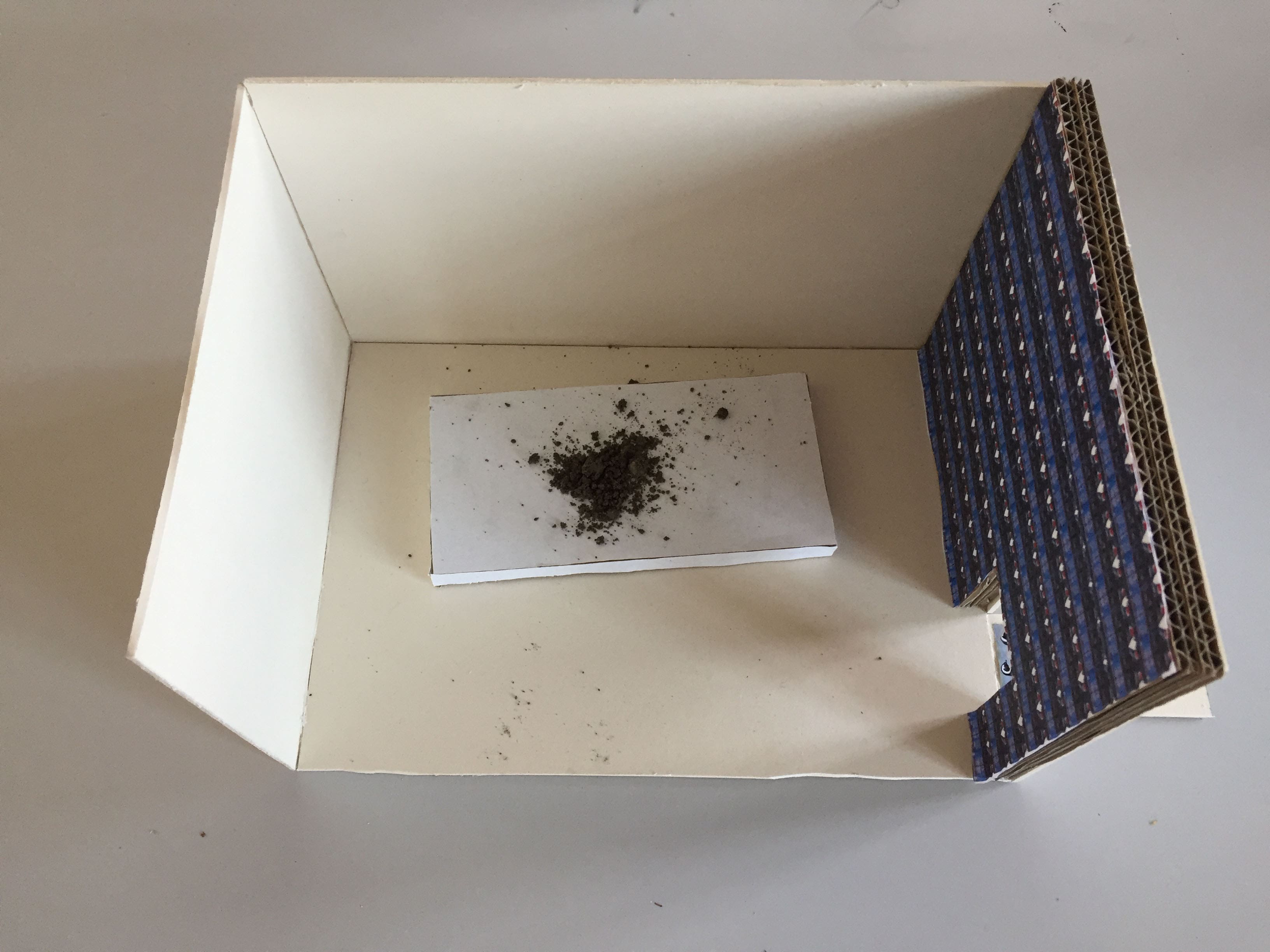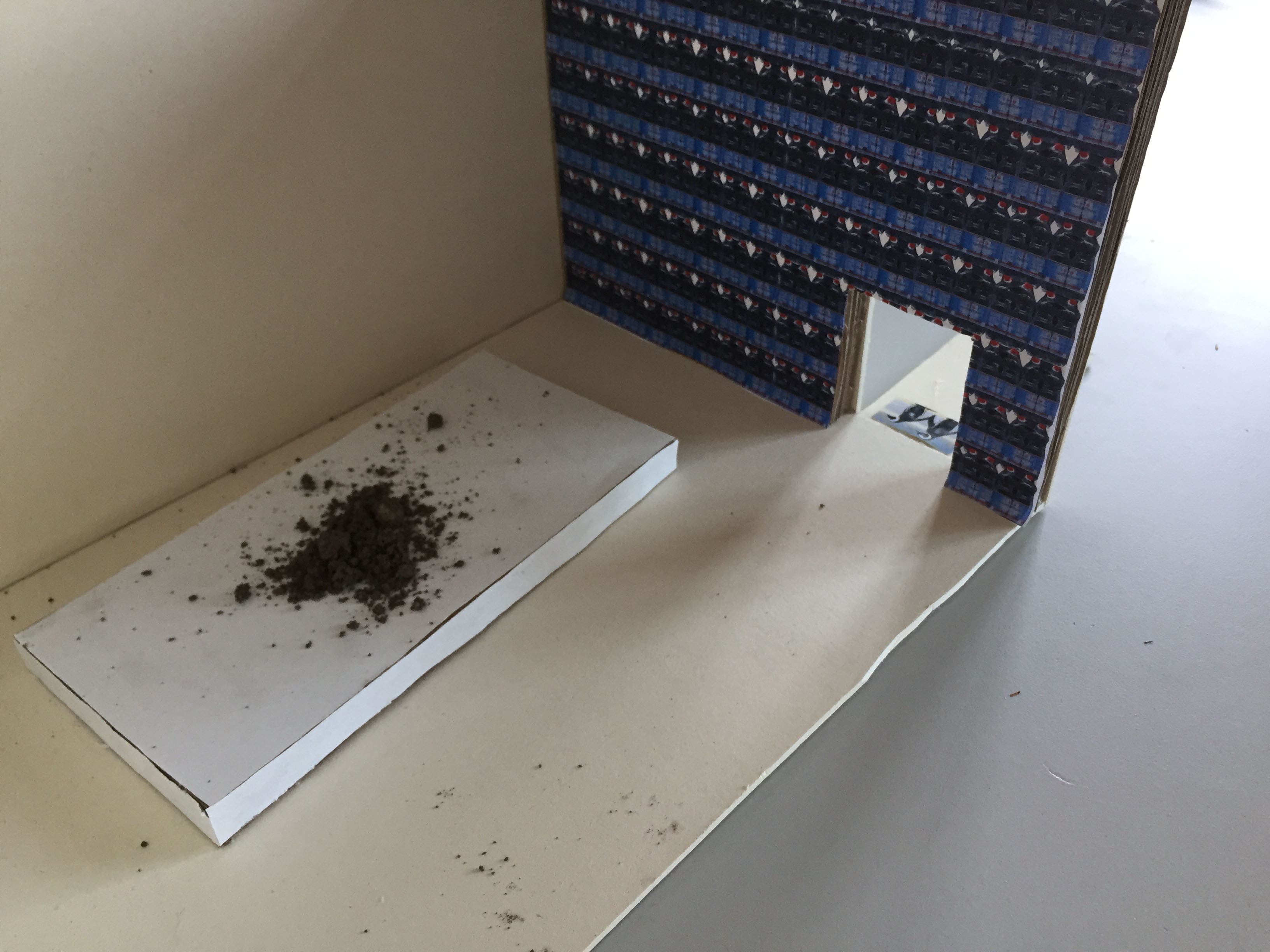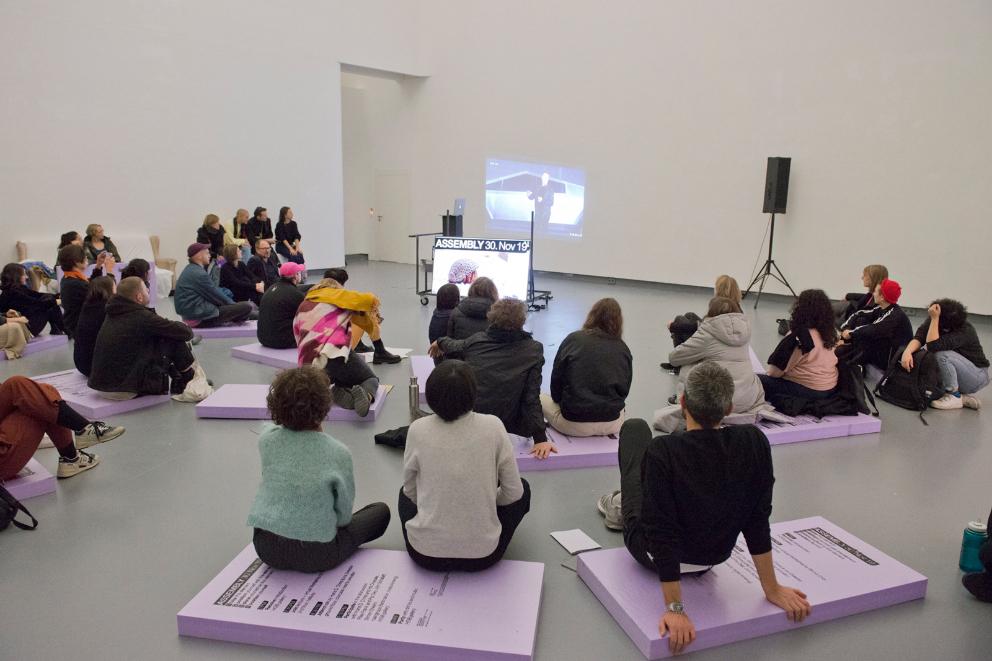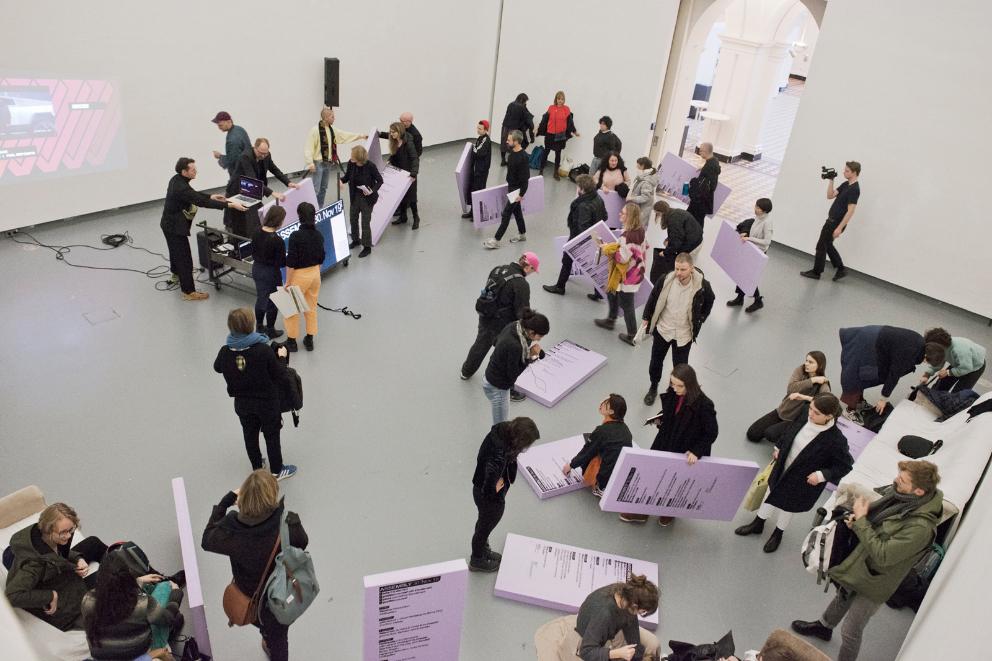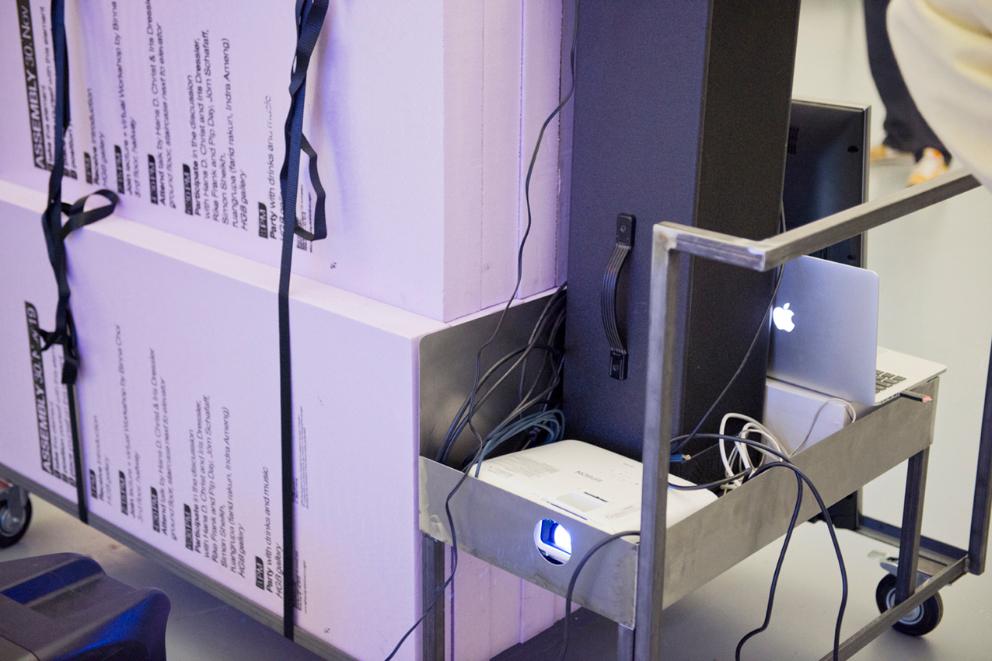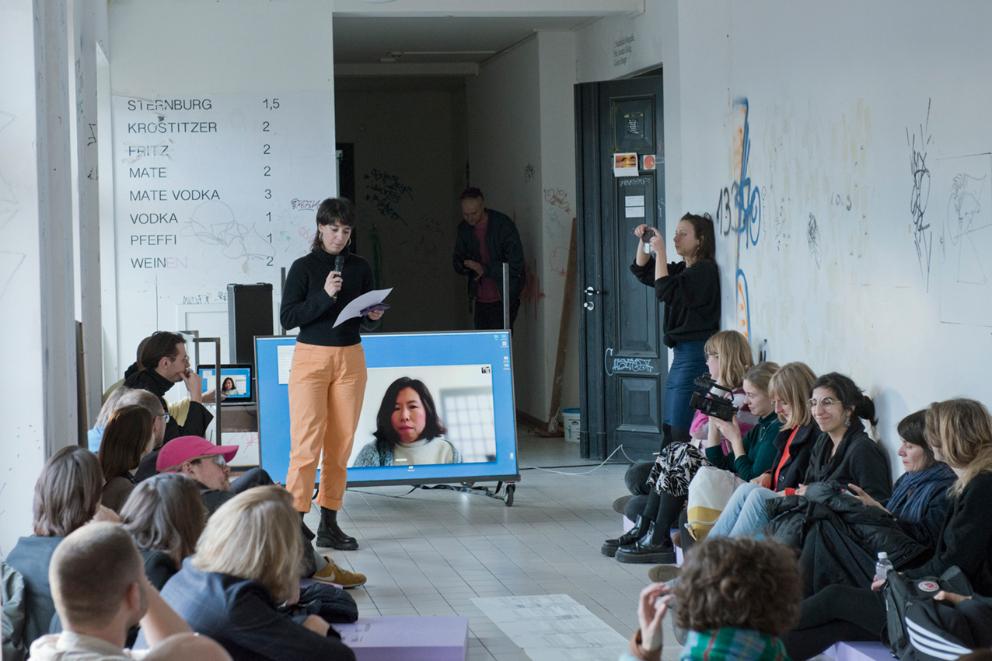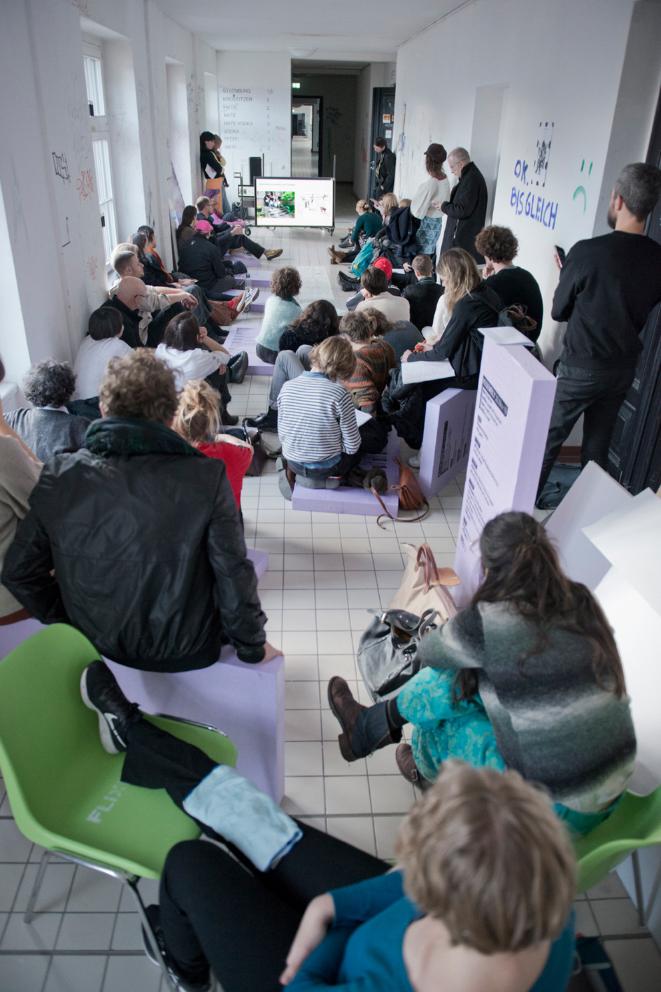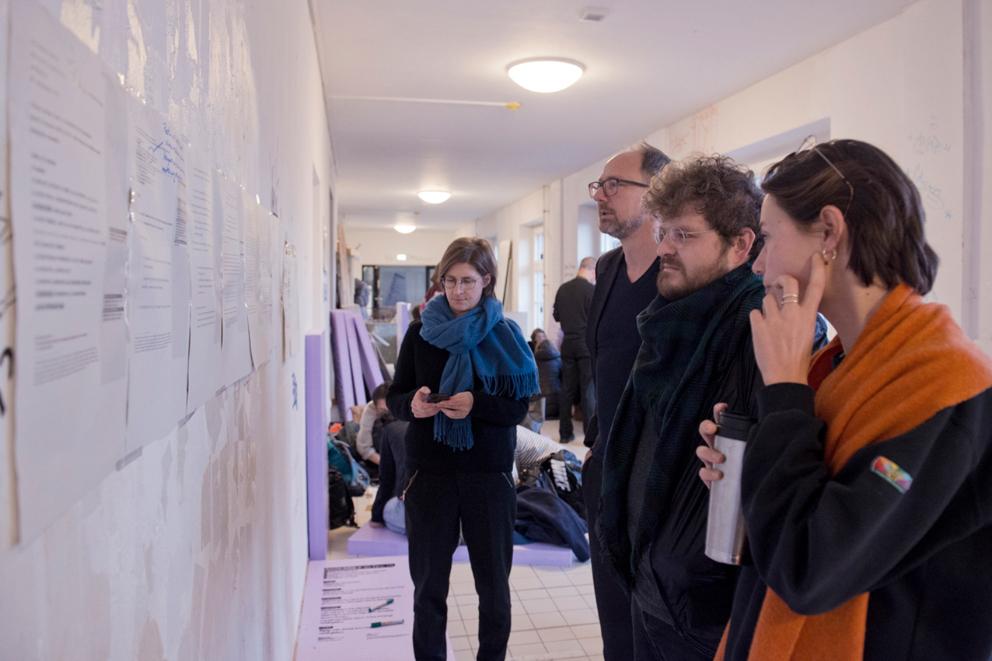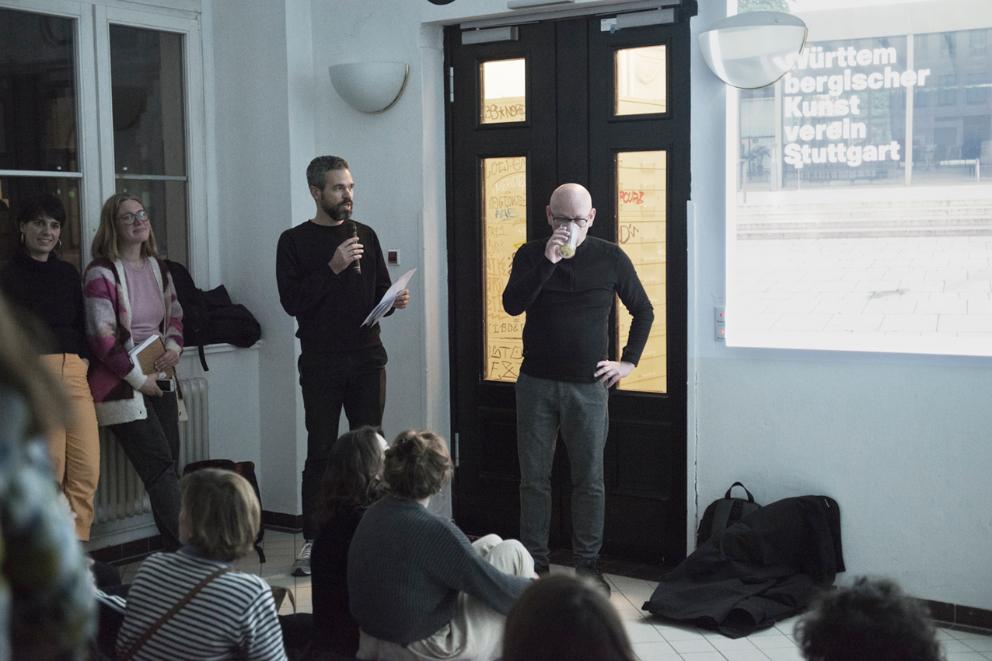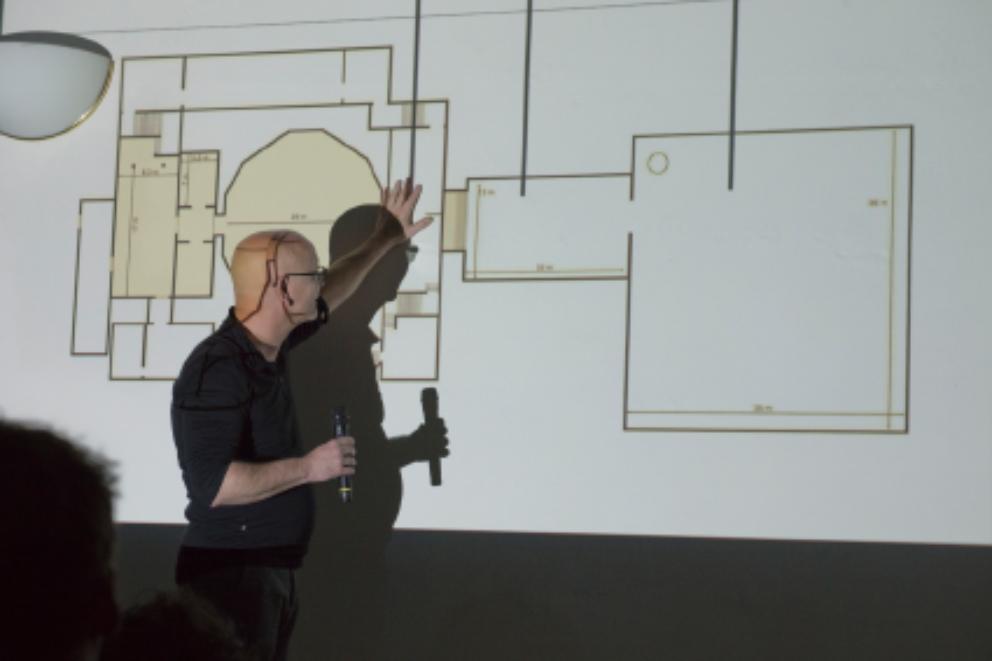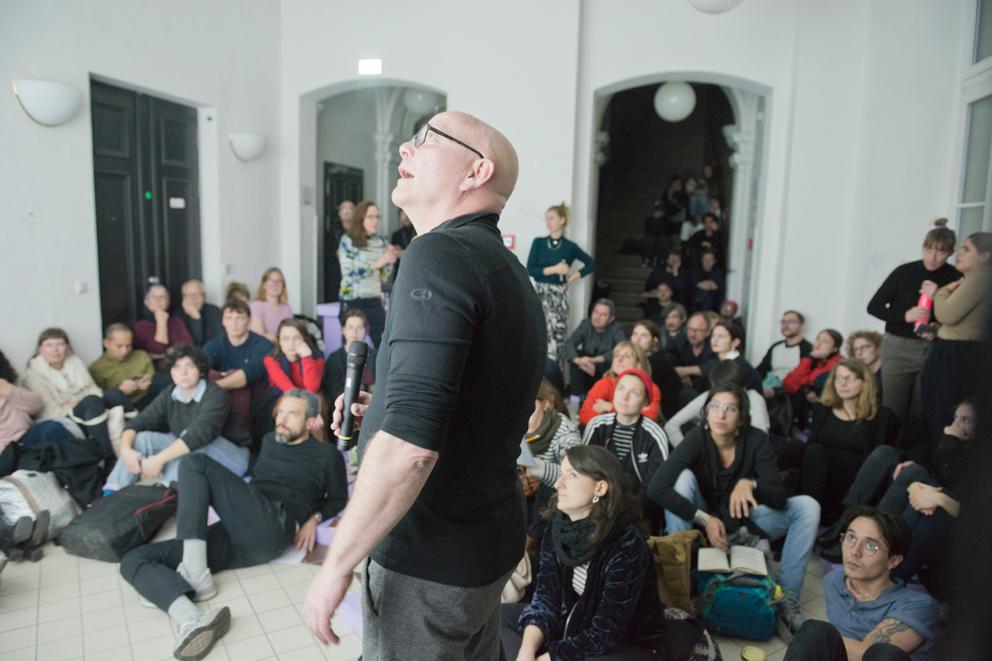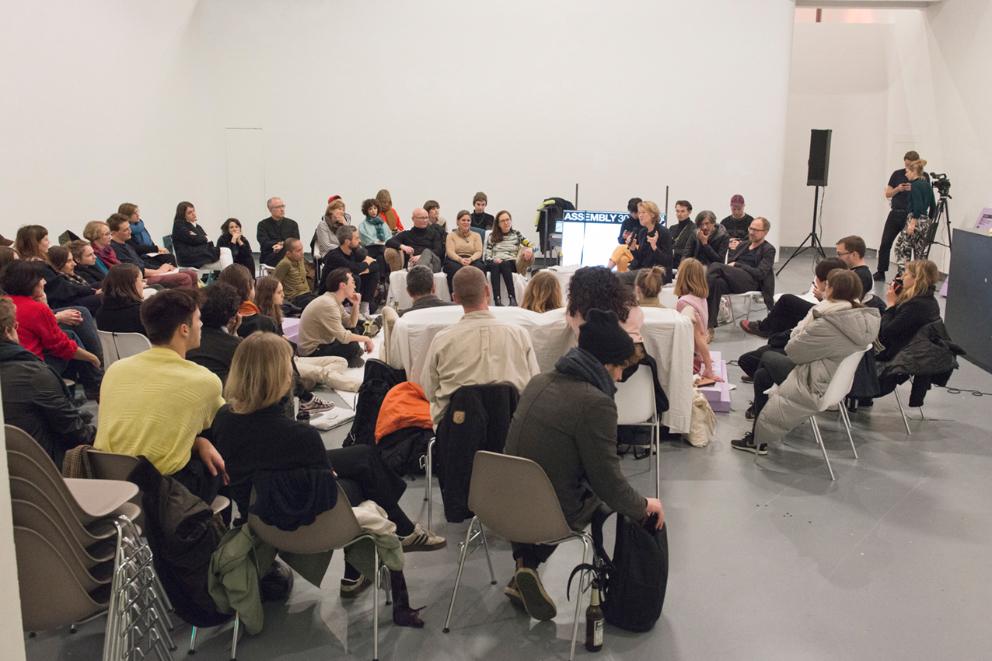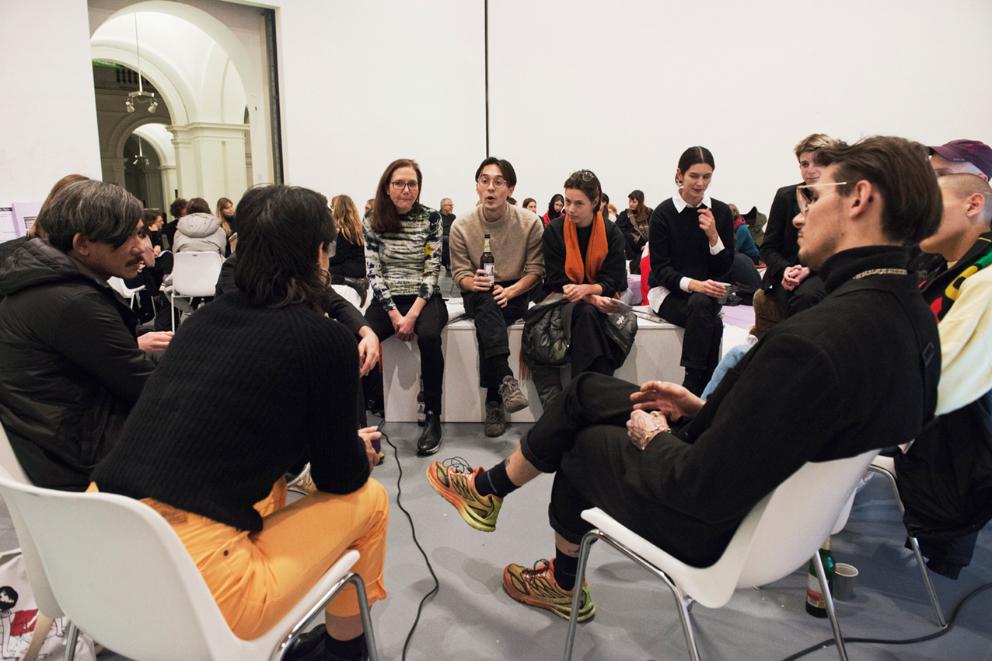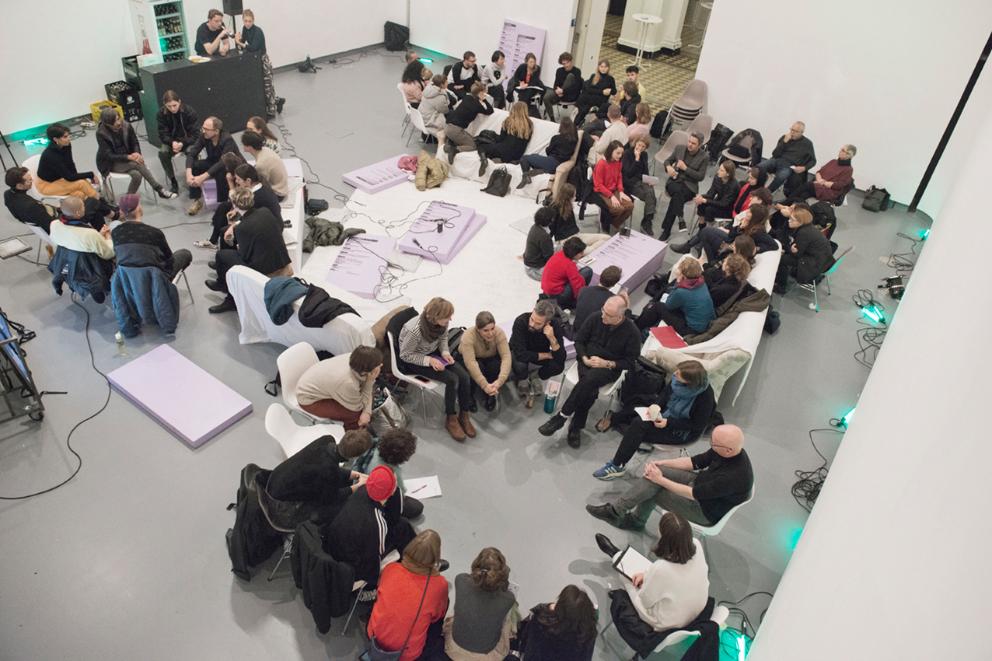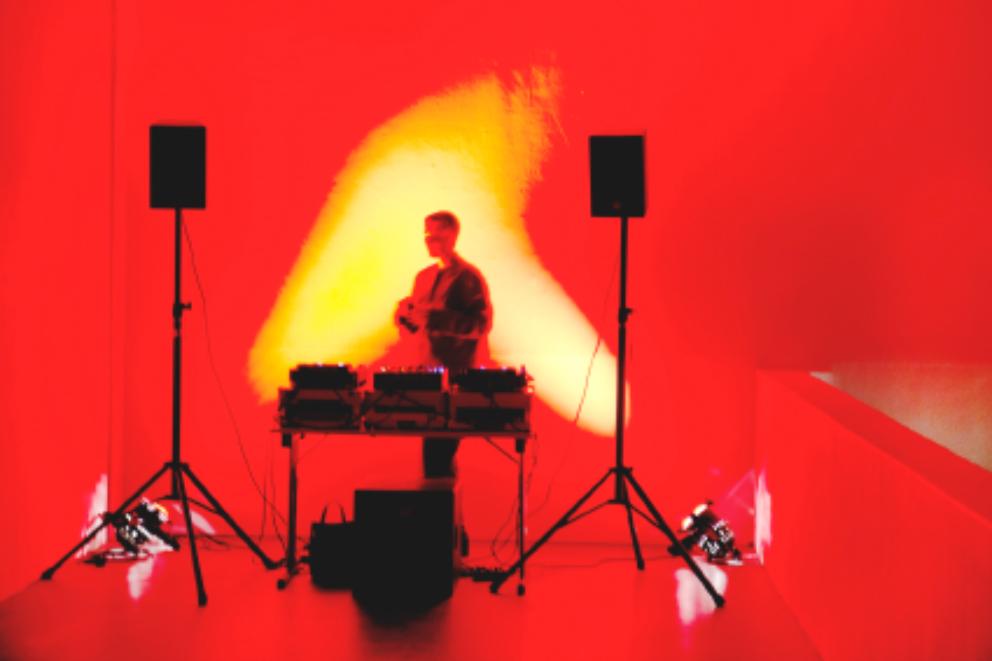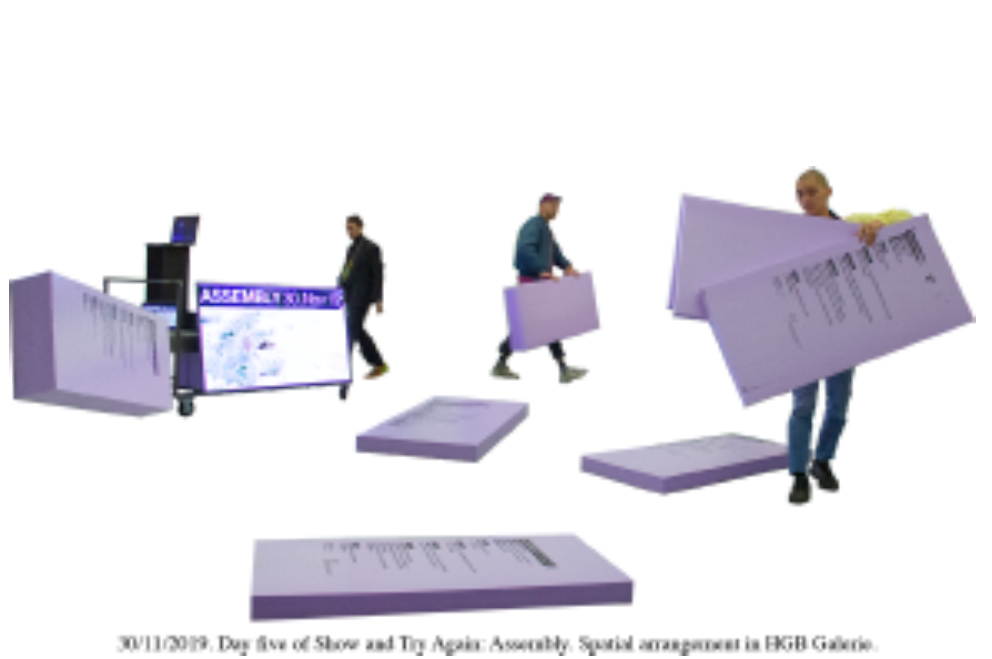asya yaghmurian
Show and try again?
Showing as non-action, as a state of being.
Treating show as a process that constantly evolves as on open space that welcomes new participants and ideas.
Accepting the neutral space and not treating the activities and knowledge as goods.
There is no ‘us’ and there is no ‘them’, there is no ‘inside’ and there is no ‘outside’.
We should talk more about art.
Trusting the process of the show, thus trusting the pause, the gap, the anarchic dimension.
Considering to not show, not try or never again.
Freeing the show, emancipating it from the structures.
Thinking about what to offer to the show and what to offer to try.
Questioning the show and questioning what do you want to show.
Finding the right addressee for the question.
Showing the try is already a show.
Showing the things that are not supposed to be shown.
Trying to show on behalf of others, the ones who don’t have the tools to assembly.
Trying to avoid the clashes of the show.
Being careful not to be stuck in the loopholes of the show.
Not bringing boredom to try again or to show.
Being careful not to cross the line between the show and the showoff.
Showing the assembly, not assembling the show.
Remembering and caring about the spectator who finally shapes the show.
Walking with the spectator through the show.
Imagining the show, as seen from non-show, assembly or try! QUESTIONING THE AFTER-SHOW is the result of a field research—trying to capture the voices of the audience in the form of questions.
It created an archive of collected questions, that have grown out of the participation in the 5 days of Show and Try Again.
Following the approach of generating a living archive that stimulates new reflections and serves as a starting point for new discussions, this encyclopedia was translated into a game—that brings the manifold thoughts of visitors, participants, artists and initiators into motion and contact.
This format uses the active, discursive qualities inherent in the nature of the questions and tries to catalogue some of the experiences of the various participants in the program.
You are cordially invited to download the game and question the follow-up of the program-week in a playful way.
jana dohmann
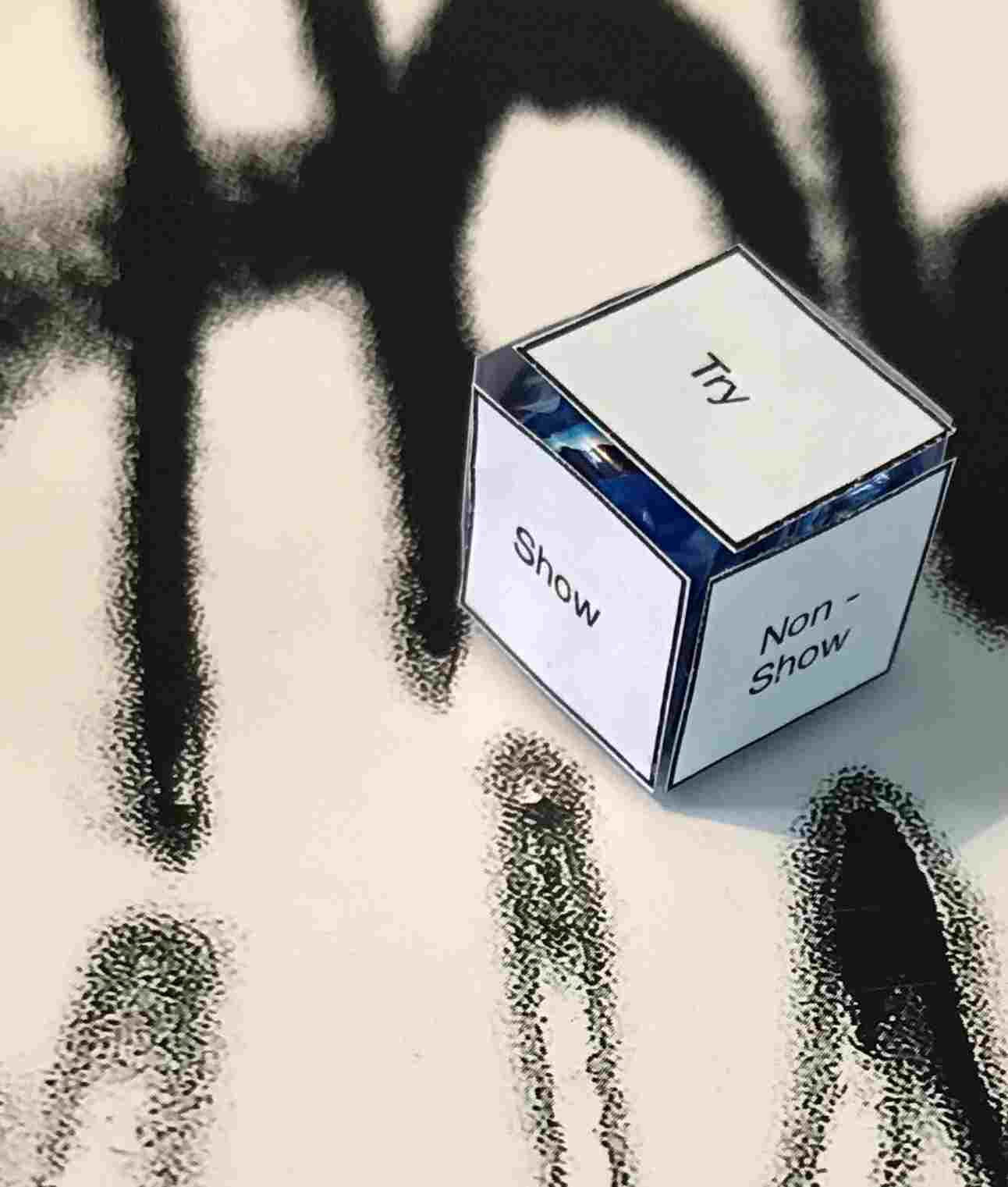
What is the political and emancipatory potential of an assembly? And how can this open up spaces for discussion?
How can these temporal structures become productive in terms of meaning production?
How can this meaning production participate in shifts and changes of existing knowledges as well as existing social, economic, institutional conditions?
How can coming together support urgent solution building processes?
Where is the crack in every system, that allows us to change the structure?
Have you had a productive day?
What is the role of the pause in public events? And how is it possible to use it more consciously?
With what kind of practical measures will art and art institutions take care for our planetary?
How is it possible to create touchabilities?
Where and when to stop or to boycott?
Can a discussion also be an artwork?
How to talk back? Does the talk back use the same terms as the talk?
Is there a post-representational museum?
What does it take to stop? When do you say enough is enough?
How to perform things that are philosophically impossible?
What are the consequences of failure?
How is infrastructure embedded in our aesthetics?
Was macht einen Vortag für mich lebendig und lädt meine Lebendigkeit als BesucherIn in den Prozess mit ein, in der Form, dass ich mich dazu berufen fühle Fragen zu stellen, zu partizipieren usw.?
Welche Bedingungen braucht Humor, um sich wohl zu fühlen?
How to use movement to restructure hierarchies in curated situations?
Who is aware of which friction?
Who is allowed to talk about which topic?
Can a biennial be an assembly?
How is it possible to hack the system?
Welche Frage, die du gerne gestellt hättest, hast du nicht gefragt? Und warum?
How to invite the (potentials of) vulnerability?
How do you dissolve and conserve singularity?
nadine vollmer
Memory Shots
31 November, 2019
This morning there is no wake up call at 7:30am and I don’t have the time to remember the day before. Therefore these notes were written down at a later time of the day while trying to remember what I thought about when rushing to the train station after the event. That really unpleasant moment in a staged situation of an assembly—people sit in a circular arrangement for one and a half hours (although we learned the day before how long-lasting assemblies can/should be), Mia and me chose to be the ones to hand over the mics between those who want to speak in order to (at least me) be in a background position -- somebody hands over the microphone to me and wants me to explain what he just summed up in a quite abriged way. Actually, I don’t want to say anything, I’m still on my way to comprehend the previous speaker’s not voiced line of thought. But instead of not saying anything, my mouth starts speaking and urges others to be part of my gradual production of thoughts while speaking. Sorry. If only I was quicker, I would have said: I prefer not to, thanks, another time. And then I would have handed over the mic to someone else. Or, better: Yes, you’re right, Hans. Thanks. And then I would have handed over the mic to someone else. How to disrupt a preconceived situation. That was the question hovering behind. By singing when singing is not part of the protocol. That’s what Hans proposes. To change the protocol by ignoring it. By intervening when the protocol suffocates the air in the space. Which means not to ask a question in a room full of questions (even if the question tries to twist the perspective and the direction). But to simply change the whole register. To learn how to change one’s own register. Otherwise one can only try to repair. So one option would be to repair the sinking ship while keeping on track at full speed. The other option would be to let the ship sink intentionally, jump overboard (everyone) and start anew. Everything I haven’t done during this last week. Everything I haven’t said during this last week. ______ ______ ______ ______ ______ ______ ______ ______ ______ ______ ______ ______ ______ ______ ______ ______ ______ ______ ______ ______ ______ ______ ______ ______ ______ ______ ______ ______ ______ ______ ______ ______ ______ ______ ______ ______ ______ ______ ______ ______ ______ ______ ______ ______ ______ ______ ______ ______ ______ ______ ______ ______ ______ ______ ______ ______ ______ ______ ______ ______ ______ ______ ______ ______ ______ ______ Archive of Things Left Unsaid or Undone.birgit messmer
